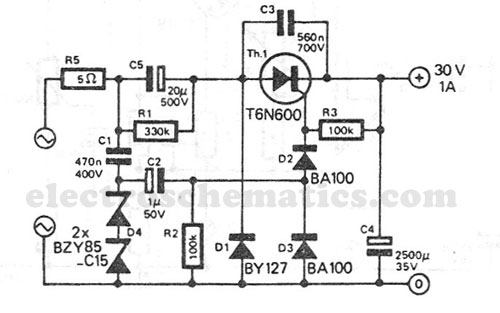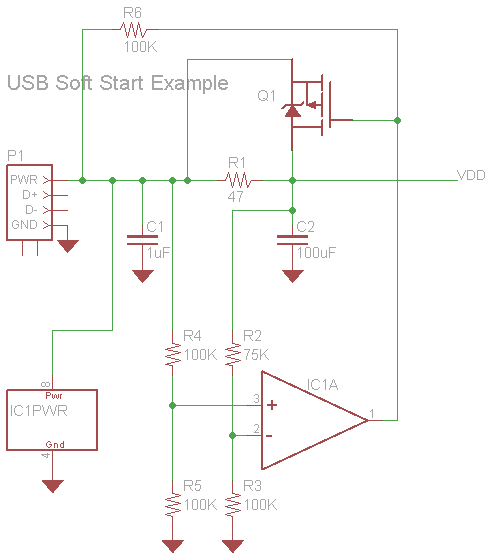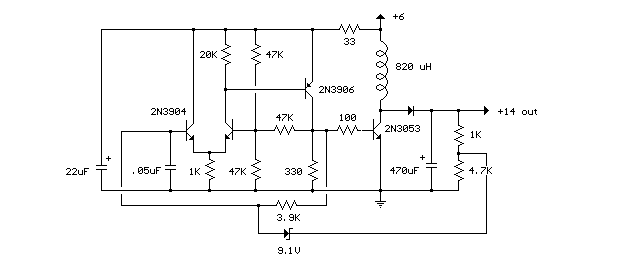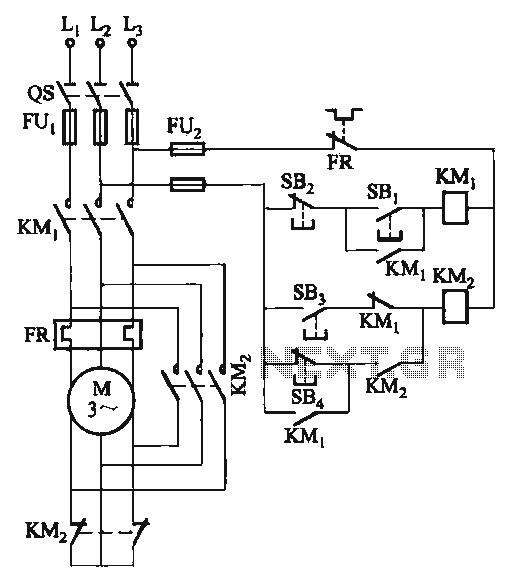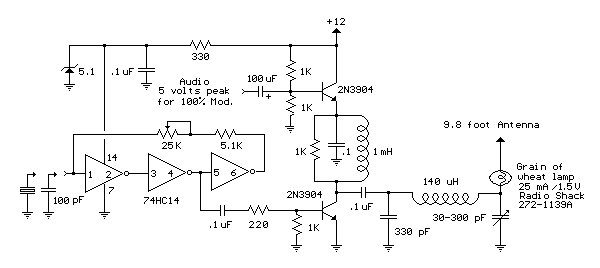
laser dioda power supply

Laser Diode Power Supply. This power supply is designed to provide electricity to consumers at low voltage, specifically 220V. While an external adapter can be utilized, it is not recommended due to size constraints. Therefore, a power supply integrated within the device is preferred. This 5V power supply employs the LM2995 in a converter circuit that can be directly connected to 220V. The process begins with the AC voltage being converted to DC voltage through a diode bridge (VD1), and subsequently reduced to 40V.
The laser diode power supply circuit is a critical component for applications requiring precise voltage and current control for laser diodes. The design typically incorporates a transformer to step down the mains voltage to a safer level before rectification. In this case, the use of an LM2995 provides a regulated output voltage of 5V, which is essential for maintaining the operational integrity of the laser diode.
The circuit begins with the AC input, which is first rectified using a diode bridge (VD1). This bridge consists of four diodes arranged in a configuration that allows both halves of the AC waveform to be converted into a pulsating DC voltage. Following rectification, the voltage is filtered using capacitors to smooth out the pulsations, providing a more stable DC voltage.
After rectification, the voltage is reduced to approximately 40V, which serves as the input for the LM2995 converter. This integrated circuit is designed for high-efficiency voltage regulation, enabling it to maintain a constant output voltage despite variations in input voltage or load conditions. The output from the LM2995 is then filtered further to ensure that the output voltage remains stable and free from noise, which is crucial for the reliable operation of the laser diode.
In summary, this laser diode power supply circuit effectively transforms high voltage AC input into a stable low voltage DC output suitable for powering laser diodes. The integration of the LM2995 not only simplifies the design but also enhances the reliability of the power supply, making it an ideal choice for various laser applications.Laser Dioda Power Supply power supply. Go to that page to read the explanation about above power supply related circuit diagram. Is often requiredtosupply electricityto theconsumerlowvoltage 220V. Youcanusean externaladapter- butit`s bad, andtoreduce the size ofthe devicerequires apower supplylocatedin the device. This 5v power supply used LM2995 to the convertercircuitwhichcan be connected directly to220V. Todo this, ACconvertedto DCvoltageacross the diodebridgeVD1, andthenloweredto40V. Above 40Vwe. 🔗 External reference
The laser diode power supply circuit is a critical component for applications requiring precise voltage and current control for laser diodes. The design typically incorporates a transformer to step down the mains voltage to a safer level before rectification. In this case, the use of an LM2995 provides a regulated output voltage of 5V, which is essential for maintaining the operational integrity of the laser diode.
The circuit begins with the AC input, which is first rectified using a diode bridge (VD1). This bridge consists of four diodes arranged in a configuration that allows both halves of the AC waveform to be converted into a pulsating DC voltage. Following rectification, the voltage is filtered using capacitors to smooth out the pulsations, providing a more stable DC voltage.
After rectification, the voltage is reduced to approximately 40V, which serves as the input for the LM2995 converter. This integrated circuit is designed for high-efficiency voltage regulation, enabling it to maintain a constant output voltage despite variations in input voltage or load conditions. The output from the LM2995 is then filtered further to ensure that the output voltage remains stable and free from noise, which is crucial for the reliable operation of the laser diode.
In summary, this laser diode power supply circuit effectively transforms high voltage AC input into a stable low voltage DC output suitable for powering laser diodes. The integration of the LM2995 not only simplifies the design but also enhances the reliability of the power supply, making it an ideal choice for various laser applications.Laser Dioda Power Supply power supply. Go to that page to read the explanation about above power supply related circuit diagram. Is often requiredtosupply electricityto theconsumerlowvoltage 220V. Youcanusean externaladapter- butit`s bad, andtoreduce the size ofthe devicerequires apower supplylocatedin the device. This 5v power supply used LM2995 to the convertercircuitwhichcan be connected directly to220V. Todo this, ACconvertedto DCvoltageacross the diodebridgeVD1, andthenloweredto40V. Above 40Vwe. 🔗 External reference
